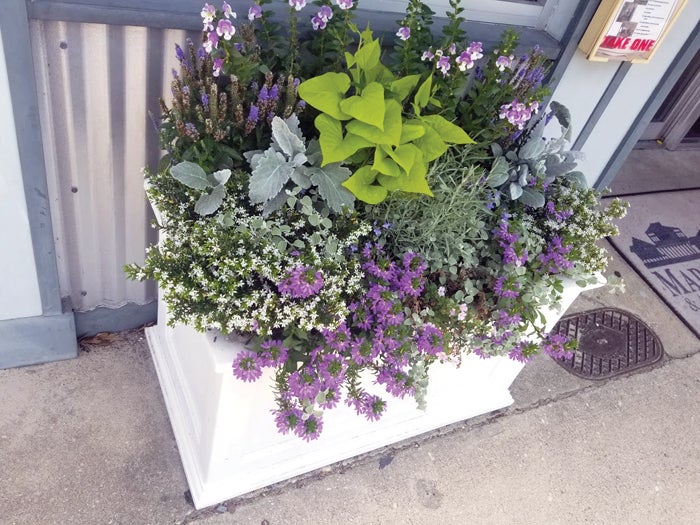Container gardens can add a splash of color and green space
Published 12:00 am Saturday, May 28, 2022
Container gardens can add a splash of color and green space to areas void of plant materials and bloom. These mini-gardens are becoming extremely popular, especially for those residing in condominiums, apartments or businesses where traditional flower beds are not possible. The mobility of containers allows grouping and easy movement controlling design elements a have control over light exposures. The use of planters is also popular for those with time constraints as well or with limited or restricted movement. The use of container gardens shouldn’t be restricted to just decks or patios. Consider using implementing planters in landscapes and planting beds as a focal point. A blank wall or lone window can be turned to an area that sparks interest with a hanging planter or window box.
Containers: Containers need to have enough capacity to support root systems of plant materials. Garden centers and many retail outlets have a cornucopia of container shapes, designs and colors. Look for drainage holes which are necessary for growth and root development. It’s also important to raise the container a few inches from the ground to help facilitate water and air drainage. Water holding ability of the container is another important aspect for plant growth. Porous containers such as clay, cement or wood have great design, but tend to dry out quickly. Resin or plastic containers have a distinct advantage of holding water in the potting soil. If you have one of these containers, make sure you have a plastic liner or pre-planted container.
Design element: Most container designs utilize three basic design elements: a focal plant, smaller supporting plant materials and cascading plants that minimize the rim of the container. However, there is really no right or wrong design for containers. Plant what you enjoy. The major concept is to consider dwarf plants that can withstand and are acceptable in crowded spaces. Keep a watchful eye on plant growth and be aware that you may periodically need to replace spent or diseased plant materials throughout the growing season.
Soil media: Soil media within the container needs to be a sterile mix with an ample blend of peat moss, vermiculite and ground bark. A high-quality mix that holds moisture that is also well drained is a must. Avoid using old, spent, previously used potting soil or garden soil in your container planting. Old planting soil or garden soils tend to harbor diseases and insects from previous plants.
Water: Containerized plantings during the summer month can be demanding, often requiring irrigation twice a day in extremely hot weather. Some professional soil mixes incorporate water-saving crystals which retain soil moisture. Packets of these crystals are also available to supplement soil mixes. Be careful when adding these crystals as over use can drown the roots. Nursery centers and other retail outlets also have drip irrigation systems specifically designed for container gardens.
Fertilization: Container plantings need regular fertilization to obtain healthy plants and maximum growth. Time-released fertilizers should be added when planting, followed by regular feedings with water soluble fertilizers. Be sure to follow instructions carefully for best results.
Darrell Blackwelder is the retired horticulture agent with the North Carolina Cooperative Extension Service in Rowan County. Contact him at deblackw@ncsu.edu.


